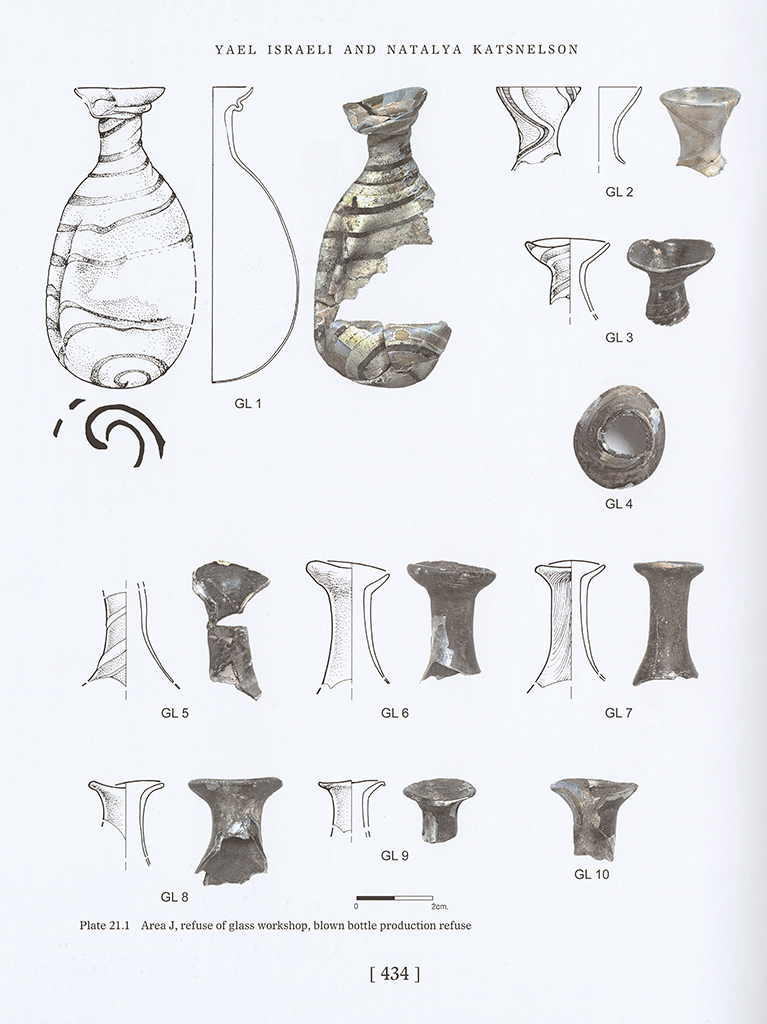The earliest known inflated glass artifacts date from about 50–40 B.C. There are two forms of objects: glass tubes with one end closed and bulbous from inflation (Fig. 2), and small, narrow-necked bottles with spiraling striped decoration (Fig. 3). They were found among refuse from a glass workshop in an excavation directed by Nahman Avigad in the Jewish Quarter of Jerusalem’s Old City in 1971. These finds still stand as the earliest reasonably closely datable evidence of glassblowing.2
Glassblowing Before its Arrival in Venice
The Earliest Inflated Glass

The earliest closely datable inflated glass artifacts: blue glass tubes with one end blown bulbous. Mid-first century B.C. The Israel Museum, Jerusalem. Photo: The Corning Museum of Glass, with the permission of Hillel Geva, Israel Exploration Society.

The earliest closely datable inflated glass artifacts: narrow-necked bottles with striped decoration. Mid-first century B.C. The Israel Museum, Jerusalem. Photo: The Corning Museum of Glass, with the permission of Hillel Geva, Israel Exploration Society.
Compared with the bottles, the tubes seem markedly primitive in technique. Therefore, the manufacture of the tubes is of particular interest. In 2008, I was kindly allowed by Yael Israeli and Natalya Katsnelson of The Israel Museum, Jerusalem, to handle and study this material. In cross section, the tubes are noticeably out of round. There appears to be a vestige of a seam running lengthwise on each example. Thus, it looks as if a somewhat thick, flattened mass of hot glass was rolled up, reheated, and drawn out to make a section of tubing.
After the glass was annealed (cooled), one end of a tube was reheated, perhaps by holding the tip inside a small furnace or in a flame, just as modern flameworkers might do. In this process, as the glass softens, surface tension causes the glass to thicken. Eventually the hole closed. Air was immediately blown forcefully into the other end of the tube, and the still soft glass was inflated to form a bulb.
The Making Glass Tubes with a Bubble on the End video presents an alternative method of making glass tubing, one of many techniques that do not require inflation. In the video, the end of the tube is initially shown being reheated in a small hole in the glassblowing furnace. (However, for better photography, a modern torch was ultimately used.) One of the original glass tubes has a tiny hole centered at the tip of the bulb. The conclusion of the video shows how such a flaw occurs.